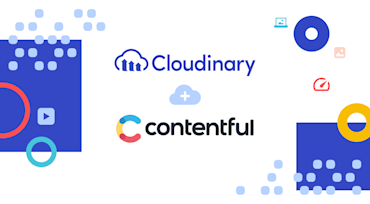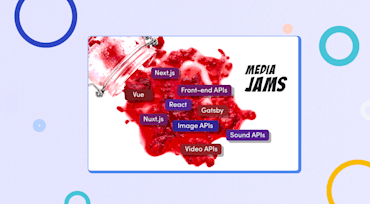For developers who constantly tackle programming problems and build solutions, finding answers through code in the wild can be a big time-saver. The Developer Relations Team at Cloudinary is proud to announce the community tool MediaJams, which aims to educate you on media with descriptions of typical use cases along with sample code for building them.

I am pleased to share that Cloudinary and Contentful have joined forces to further streamline the creation, processing, and delivery of online content through Cloudinary’s digital asset management (DAM) solution and advanced transformation and delivery capabilities for images and video. What’s more, the partnership delivers a headless approach to DAM. By leveraging APIs for media management tasks, marketers and developers alike benefit from an integrated stack of optimized assets for optimization and automation. As a result, page loads are fast and beautiful, and at scale—with less overhead and effort.

Here at Cloudinary, we provide a cloud-based tool that enables our users to compress images and video for their websites and apps. Our goal is to preserve the visual integrity of the content, but deliver the smallest file size to any device or browser to ultimately optimize website performance and end user satisfaction.

Managing media files (processing, storage and transformation) is one of the biggest challenges we encounter as practical developers. These challenges include:
A great service called Cloudinary can help us overcome many of these challenges. Together with Cloudinary, let's work on solutions to these challenges and hopefully have a simpler mental model towards media management.

Developing a library requires a different approach from developing an application. You must consider the use of the library in someone else’s application and design for it. React is well suited for this purpose. And if the library you are creating is an adapter to another library, you can dynamically generate the component's properties definition to ensure they are forward compatible. There is however more than one way to achieve the same goal, with some conventions to follow and others to cautiously not follow. In particular, I chose to use the context function even though it is an experimental feature because it is useful when you don’t know, or can’t dictate, the way your library's components will be utilized.


Different online services, websites and mobile applications have very different image management requirements. Despite the differences, the image management pipeline boils down to the same basic formula - upload the images, normalize them, store them and transform them to create derivatives (thumbnails, effects, watermarks, etc.). Afterwards, prepare them for delivery and make sure they are accessible to your users quickly and efficiently when browsing your website or using your mobile app.
